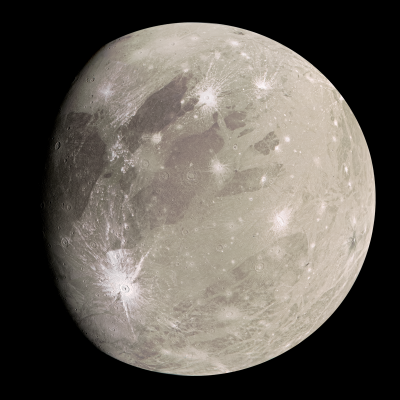
Ganymede is the largest moon in the solar system (larger than the planet Mercury), and is the only moon known to have its own internally generated magnetic field.
Ganymede is the only moon known to have its own magnetic field – a discovery made by NASA’s Galileo spacecraft in 1996. The magnetic field causes auroras, which are ribbons of glowing, hot, electrified gas, in regions circling the north and south poles of the moon. Because Ganymede is close to Jupiter, its magnetic field is embedded in, or lies within, Jupiter’s magnetic field.
When Jupiter’s magnetic field changes, the auroras on Ganymede also change, “rocking” back and forth. It was by watching the rocking motion of the two auroras, that a team of scientists led by Joachim Saur of the University of Cologne in Germany came up with the idea of using the Hubble space telescope to learn more about the inside of the moon.
Ganymede has two distinct types of terrain: large, bright regions of ridges, and grooves that slice across older, darker terrains. This suggests to scientists that Ganymede’s crust has been under tension from global tectonic processes. NASA’s Juno spacecraft took the most recent images of Ganymede’s surface during flybys in June 2021.
Ganymede was discovered by Italian astronomer Galileo Galilei on Jan. 7, 1610. The discovery, along with his discovery of three other large moons around Jupiter, was the first time a moon was discovered orbiting a planet other than Earth. The discovery eventually led to the understanding that planets in our solar system orbit the Sun, instead of our solar system revolving around Earth. (Jupiter now has 53 named moons and 26 provisional moons awaiting confirmation of discovery).
Credit : NASA Science
Picture Credit : Google




